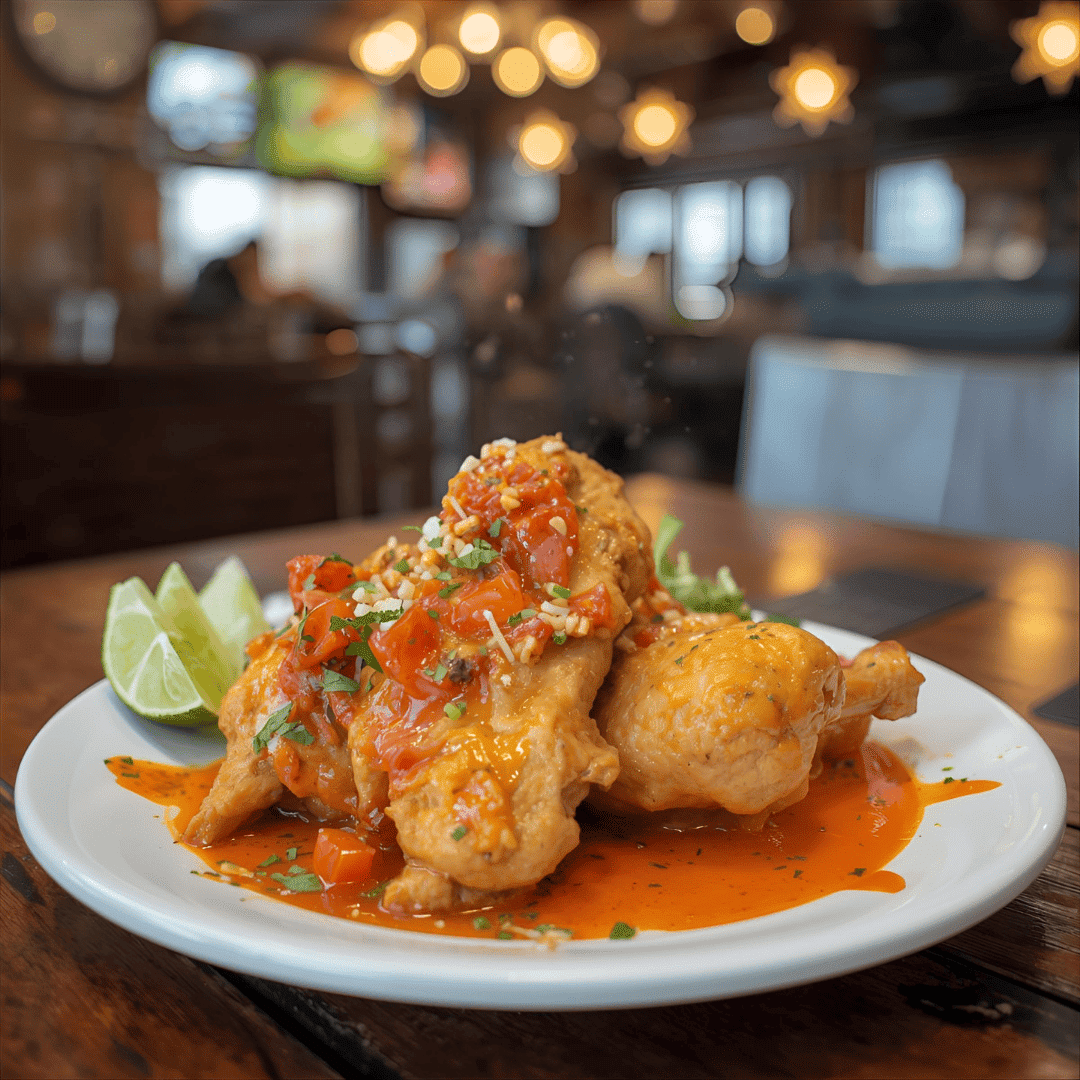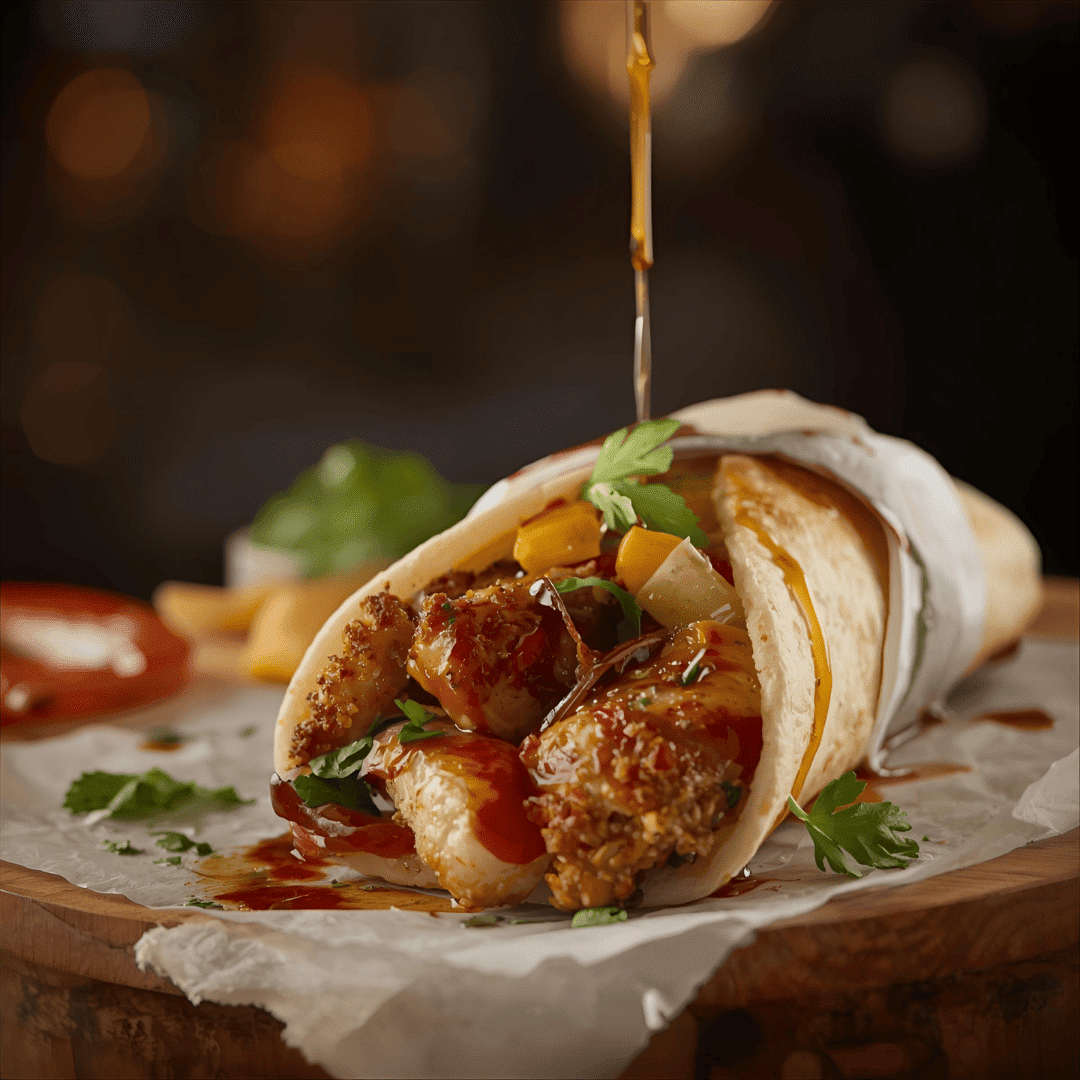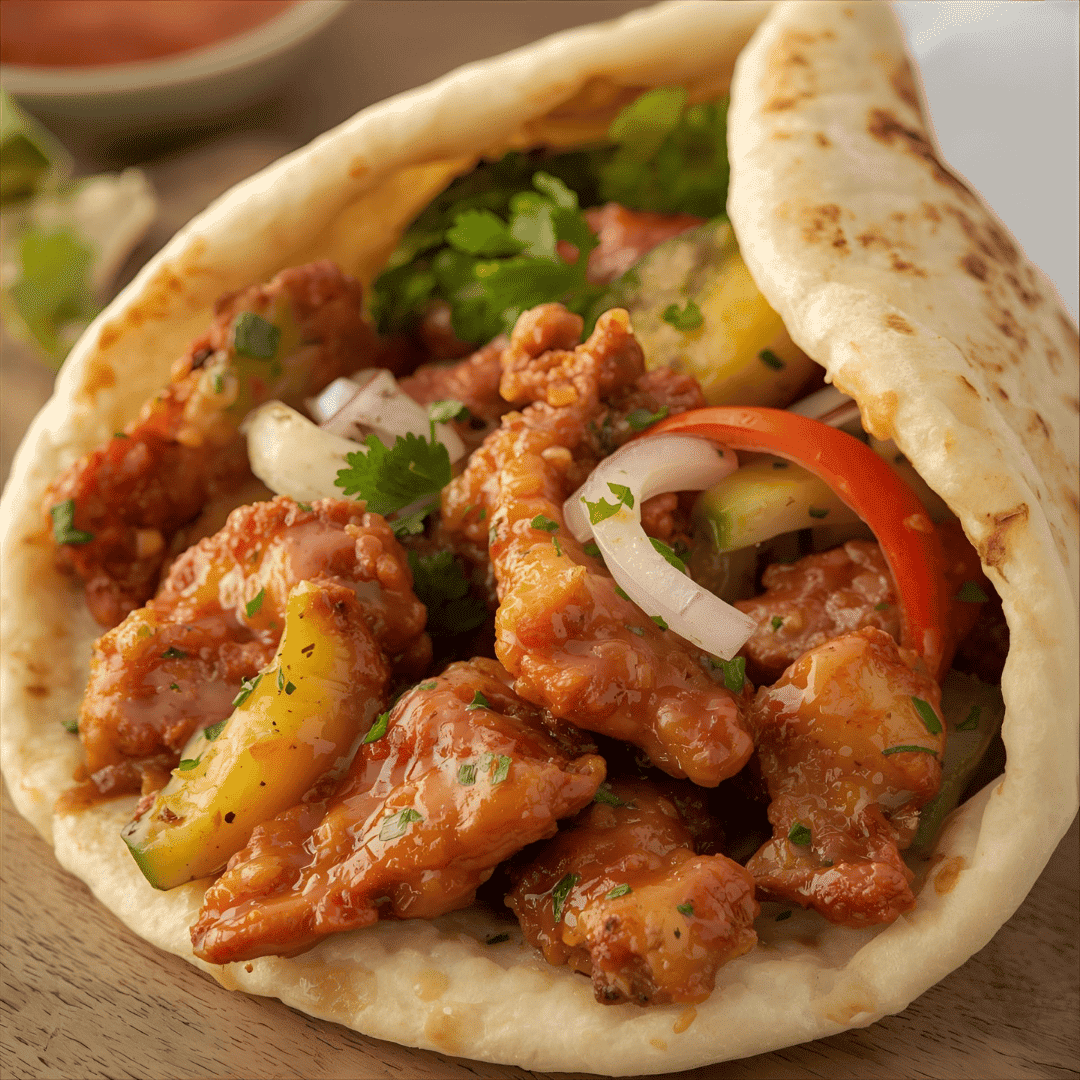Table of Contents
- Introduction: Elevating Doner from a Snack to a Feast
- Deconstructing the Perfect Chicken Doner Plate: Beyond the Meat
- The Foundation: Why the Right Rice is Non-Negotiable
- The Freshness Factor: The Crucial Role of the Salad
- The Harmony of Sauces: Tying the Plate Together
- The Star of the Show: The Soul of Our Chicken Doner
- The Marinade: A Legacy of Flavor and Tenderness
- The Vertical Roast: A Technique for Perfect Texture
- Building a Balanced Chicken Doner Plate: A Chef’s Perspective
- Achieving Essential Textural Contrast
- A Practical Tip for Composition and Balance
- Common Mistakes That Ruin a Chicken Doner Plate
- Nutritional Authority: Is the Chicken Doner Plate a Healthy Meal?
- Macronutrient Synergy: A Naturally Balanced Meal
- Calorie Considerations for an Authentic Doner Plate
- The Authentic Accompaniments: More Than Just Sides
- Turkish Pilaf (Pilav): The Fluffy, Buttery Base
- Shepherd’s Salad (Çoban Salata): The Perfect Acidic Counterpoint
- Pickles (Turşu) and Peppers: The Final Touch of Authenticity
- The Culinary Science of a Flawless Doner Plate
- How Acidity and Fat Create a Perfect Pairing
- The Power of Umami in Turkish Cuisine
- Frequently Asked Questions (FAQs) About the Chicken Doner Plate
- Conclusion: It’s More Than a Meal, It’s an Experience
Introduction: Elevating Doner from a Snack to a Feast
While the handheld doner wrap is a globally recognized icon of street food, its more distinguished sibling, the chicken doner plate, offers a complete and deeply satisfying culinary experience. It transforms a quick bite into a well-rounded, sit-down meal, showcasing a symphony of flavors, textures, and aromas that a simple wrap cannot contain. As a chef who has spent over a decade perfecting the art of Turkish cuisine right here in Canada, I’ve seen firsthand how a properly constructed doner plate can change a person’s entire perception of this dish. It’s not just about placing meat next to rice; it’s about a deliberate composition where every element has a purpose. This guide is the culmination of my experience, designed to give you an expert’s insight into what truly makes a chicken doner plate exceptional, from the science of its flavor pairings to the tradition behind its accompaniments.
Deconstructing the Perfect Chicken Doner Plate: Beyond the Meat
An authentic chicken doner plate is a masterclass in balance. The succulent, vertically roasted chicken is undoubtedly the star, but the supporting cast is what elevates the entire performance. From my experience, a plate that neglects its side dishes is a plate that fails to deliver an authentic experience.
The Foundation: Why the Right Rice is Non-Negotiable
The base of any great doner plate is the rice. This is not just a filler; it’s the canvas upon which the other flavors are painted. In Turkish cuisine, this is typically pilav—long-grain rice often toasted in butter with orzo (şehriye) before being simmered in a flavourful broth. The goal is to achieve individual, fluffy grains, not a sticky or mushy clump. This buttery, savory rice serves to absorb the delicious juices from the chicken and the zesty tang of the sauces, providing a comforting and essential carbohydrate component that balances the richness of the meat. A poorly cooked rice is the first sign of a kitchen that cuts corners.
The Freshness Factor: The Crucial Role of the Salad
Next to the warm, savory components, the salad provides a critical counterpoint of freshness, acidity, and crunch. A traditional Turkish side salad, often a variant of çoban salata (shepherd’s salad), is a simple mix of diced tomatoes, cucumbers, onions, and parsley, dressed with lemon juice and olive oil. This isn’t just a token patch of green. From a culinary expertise standpoint, the salad’s acidity cuts through the fat of the doner meat, cleansing the palate and preventing the dish from feeling heavy. Its crisp texture also contrasts beautifully with the soft rice and tender chicken.
The Harmony of Sauces: Tying the Plate Together
Sauces are the final brushstroke that brings the entire composition of the chicken doner plate together. Typically, two sauces are offered:
- Garlic Sauce (Sarımsaklı Yoğurt): A creamy, yogurt-based sauce with a pungent garlic kick. It adds a cooling element and a rich, tangy flavor that complements the chicken perfectly.
- Spicy Sauce (Acı Sos): A red pepper-based sauce that provides a welcome heat. Its spice level can vary, but its purpose is to add another layer of complexity and excitement to the plate.
A practical tip I always share: apply the sauces in moderation initially. A great doner plate should have its components’ individual flavors shine, not be drowned in sauce.
The Star of the Show: The Soul of Our Chicken Doner
Even on a plate full of delicious components, the quality of the chicken doner itself remains paramount. The techniques used to prepare the meat are what establish the authority and trustworthiness of the establishment.
The Marinade: A Legacy of Flavor and Tenderness
As detailed in our exploration of the doner itself, the marinade is the heart of the flavor. For a chicken doner plate, this is even more critical, as the meat is savored on its own, not just as part of a wrap. Our marinade, a time-honored recipe, uses a yogurt base to tenderize the chicken thighs, infused with a precise blend of paprika, oregano, and other Turkish spices. This ensures every slice is not only bursting with flavor but also possesses a succulent, melt-in-your-mouth texture that stands up to the other elements on the plate.
The Vertical Roast: A Technique for Perfect Texture
The vertical rotisserie is essential for achieving the signature doner texture. As the cone of meat rotates, the outer layer caramelizes, developing a delicious crust through the Maillard reaction. This outer layer is then thinly sliced off, revealing the juicy, perfectly cooked meat underneath. This method ensures that the chicken served on your plate has a delightful combination of crispy, caramelized edges and a tender, moist interior—a textural experience that simply cannot be replicated with other cooking methods.
Building a Balanced Chicken Doner Plate: A Chef’s Perspective
From my years of experience behind the line, I can tell you that the assembly of the plate is a craft in itself. It’s about creating a harmonious experience in every single bite.
Achieving Essential Textural Contrast
The ultimate goal of a chicken doner plate is to offer a journey of textures. Think about a perfect spoonful: you get the soft, individual grains of buttery rice, the tender yet slightly crispy chicken, the crisp crunch of fresh cucumber and onion from the salad, and the smooth creaminess of the garlic sauce. This textural interplay is what makes the dish so satisfying and is a clear indicator of a chef’s expertise.
A Practical Tip for Composition and Balance
When I train new chefs, I teach them to think of the plate as having distinct quadrants. The rice forms a generous bed, the chicken is layered appealingly over one part of it, and the salad occupies its own space, ensuring its fresh juices don’t make the rice soggy. Sauces should be drizzled on top or served in small containers on the side to give the customer control. This thoughtful presentation is a hallmark of a high-quality establishment.
Common Mistakes That Ruin a Chicken Doner Plate
- Over-Portioning One Element: A plate that is 80% rice with a small sprinkle of meat is a sign of cost-cutting, not quality. There must be a generous and balanced ratio.
- Pre-Mixing Components: The salad should never be tossed with the rice or meat beforehand. This creates a soggy, lukewarm mess and destroys the intended textural contrast.
- Using Generic Sauces: Squeezing sauces from large, generic wholesale bottles is a red flag. Authentic sauces are made in-house and have a freshness and depth of flavor that cannot be replicated.
Nutritional Authority: Is the Chicken Doner Plate a Healthy Meal?
Providing trustworthy nutritional information is essential. Many customers in Canada are health-conscious, and they deserve to know what they are eating. The chicken doner plate can, in fact, be an exceptionally well-balanced and nutritious meal when prepared correctly.
Macronutrient Synergy: A Naturally Balanced Meal
A well-composed chicken doner plate is a textbook example of a balanced meal, hitting all the key macronutrients:
- Protein: The chicken doner provides high-quality protein, crucial for muscle maintenance and satiety.
- Carbohydrates: The rice pilaf offers complex carbohydrates for sustained energy.
- Fats: Healthy fats come from the olive oil in the salad dressing and the natural fats in the chicken thighs.
- Vitamins and Fiber: The fresh salad is packed with essential vitamins, minerals, and dietary fiber.
This composition aligns well with the principles of the Mediterranean diet, which is consistently ranked as one of the healthiest eating patterns. As noted by authoritative sources like the Mayo Clinic, this dietary approach is linked to heart health and longevity.
Calorie Considerations for an Authentic Doner Plate
While it is a balanced meal, a chicken doner plate is also a substantial one. A typical restaurant portion can range from 800 to 1200 calories, depending on the size and the specific amounts of rice, meat, and sauces. For diners seeking a lighter option, a practical tip is to ask for extra salad in place of some of the rice. This is a request that any trustworthy and customer-focused restaurant should be happy to accommodate.
The Authentic Accompaniments: More Than Just Sides
To demonstrate true expertise, one must appreciate the specific, traditional side dishes that define an authentic Turkish chicken doner plate.
Turkish Pilaf (Pilav): The Fluffy, Buttery Base
As mentioned, this is not plain steamed rice. The technique of first toasting the rice and orzo in butter creates a nutty, rich flavor and prevents the grains from sticking together. This is a foundational skill in Turkish kitchens and a clear sign of authenticity.
Shepherd’s Salad (Çoban Salata): The Perfect Acidic Counterpoint
The name “shepherd’s salad” evokes its rustic, simple origins. It’s designed to be made with the freshest possible ingredients. The key is the dressing—nothing more than high-quality olive oil, fresh lemon juice, salt, and perhaps a sprinkle of sumac for an extra citrusy tang. It’s the perfect foil to the rich doner meat.
Pickles (Turşu) and Peppers: The Final Touch of Authenticity
Often, a small serving of pickled vegetables (turşu), like pickled red cabbage or hot peppers, is included on the plate. This element provides a sharp, briny, and sometimes spicy kick that further cleanses the palate and adds another layer of complexity. From my experience, this is a small detail that true aficionados of Turkish food look for and appreciate.
The Culinary Science of a Flawless Doner Plate
Understanding the “why” behind these classic pairings showcases a deeper level of expertise that builds authority and trust. The composition of a chicken doner plate is not accidental; it is a masterwork of food science.
How Acidity and Fat Create a Perfect Pairing
The pairing of fatty, savory meat with acidic elements (lemon juice in the salad, yogurt in the sauce, pickles) is a classic culinary technique. The acid works to cut through the richness of the fat, a process known as “flavor balancing.” This prevents the palate from becoming fatigued by the rich flavors of the meat and rice, allowing you to enjoy every bite as much as the first.
The Power of Umami in Turkish Cuisine
Umami, the fifth basic taste, is often described as “savory” or “meaty.” It is a cornerstone of a satisfying meal. On a chicken doner plate, umami is present in multiple ingredients. The slow-roasted chicken, especially its caramelized crust, is rich in umami compounds. Tomatoes in the salad and the yogurt-based sauces also contribute. According to a study in the journal Flavour, the synergistic effect of multiple umami-rich ingredients significantly enhances the overall flavor perception and satisfaction of a dish. This scientific principle is at the heart of why a well-made doner plate is so deeply gratifying.
Frequently Asked Questions (FAQs) About the Chicken Doner Plate
Here are expert answers to some of the most common questions about this beloved dish.
1. What is typically included in a chicken doner plate? An authentic plate includes thinly sliced chicken doner, a bed of Turkish rice pilaf, a fresh shepherd’s salad, and servings of garlic and spicy sauces. It may also come with a side of pita bread and pickled vegetables.
2. How many calories are in a chicken doner plate? A standard restaurant portion typically ranges from 800 to 1200 calories. The exact amount depends heavily on portion sizes of meat, rice, and the amount of sauce used.
3. What is the difference between a doner plate and a doner kebab? “Doner kebab” refers to the meat itself (the rotating roast). A “chicken doner plate” is a specific way of serving that meat as a complete meal with rice and salad, whereas a “doner wrap” or “pide” are other serving styles.
4. What is the best rice to serve with a chicken doner plate? The most authentic choice is Turkish pilaf, made with long-grain rice and toasted orzo, cooked in butter and broth to ensure fluffy, separated grains. Plain steamed rice is a less authentic substitute.
5. What sauces go best with a chicken doner plate? The classic pairing is a creamy, tangy garlic yogurt sauce and a red chili-based spicy sauce. These two provide a cooling and a heating element that perfectly complements the savory meat.
Conclusion: It’s More Than a Meal, It’s an Experience
The chicken doner plate is a testament to the beauty of a balanced, thoughtfully composed meal. It is a harmonious blend of savory meat, comforting rice, fresh salad, and vibrant sauces, where each component plays a vital role. It is a dish that requires experience to prepare and expertise to assemble correctly. Trust is earned by consistently delivering on the promise of quality in every single element on that plate.
Our final, practical tip for you as a diner: look for a plate that looks composed, not just piled. The care taken in its presentation is often a direct reflection of the care taken in its preparation.
We have dedicated ourselves to mastering this culinary art form. To experience a chicken doner plate where every detail is honored with tradition and expertise, we warmly invite you to our table. Visit us at Ottoman Turkish Grill and taste the passion and authenticity for yourself.





